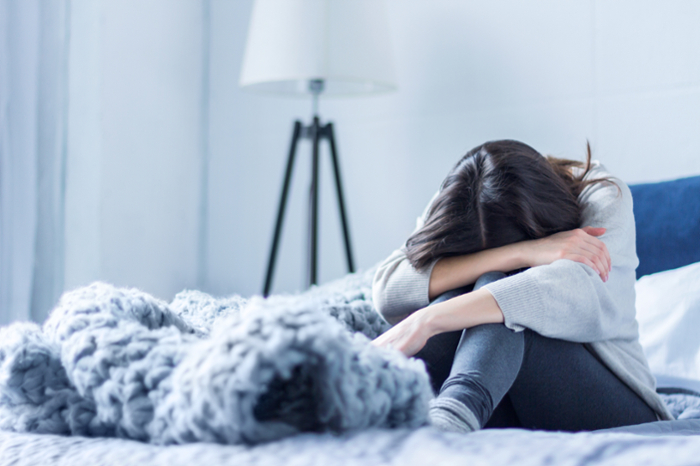As Social Lives Resume, a Mental Health Crisis Continues
Survey finds depression remains high among young adults, with 34% reporting thoughts of suicide or self harm
Get all our news
This is really concerning. During the pandemic, many hoped that these numbers, among young people in particular, would decline but we are seeing no change.”
James Druckman
IPR political scientist

Nearly three years into the pandemic, young adults are returning to their pre-pandemic social lives. Yet a mental health crisis among America’s young adults persists, according to a recent national survey.
The survey confirms the pandemic’s lingering impact on mental health for all Americans, but in particular for young adults: While 18- to 24-year-olds say they are going out more, their overall levels of depression have not fallen as much as one would have expected with the lifting of pandemic restrictions. And in a troubling discovery, just over one-third of them (34%) report thinking recently they would be better off dead or harming themselves.
Between December 2022 and January 2023, a team of researchers from Northwestern, Harvard, Rutgers, and Northeastern universities surveyed nearly 25,000 American adults on their mental health during the pandemic. Overall, Americans are still feeling depressed, with 24% of them experiencing a depression concerning enough that it would typically trigger a referral for evaluation and treatment. This national rate is three times greater than the 8% seen before the pandemic, as measured by the CDC. For young adults, however, that figure jumps to 44%.
“This is really concerning. During the pandemic, many hoped that these numbers, among young people in particular, would decline but we are seeing no change,” said IPR political scientist James Druckman, who co-authored the report. “This could reflect trauma from experiencing the pandemic at a key point of socialization.”
To identify trends, the researchers analyzed data since May 2020 for more than 400,000 respondents across 19 surveys, including over 50,000 responses from 18- to 24-year-olds. They also break down results by age, employment, gender, sexual orientation, earnings, and race.
Younger respondents identifying as gay, lesbian, or bisexual reveal the highest levels of depression and stress of all age groups and substantially more than those identifying as heterosexual. Nearly two-thirds (63%) of these 18- to 24-year-olds meet the criteria for at least moderate depression, while 56% report symptoms of generalized anxiety. In comparison, only 36% of heterosexual 18- to 24-year-olds say they are depressed, and 32% say they are anxious.
“Our study shows clearly that underserved populations are reporting alarming rates of depression, anxiety, stress, and loneliness,” said Northwestern PhD student Jonathan Schulman, a report co-author. “Just as is the case with physical health, it is clear that there are vulnerable populations suffering from social and economic injustices and insufficient access to affordable mental healthcare.”
The researchers also detail that younger respondents, students, women, Hispanic respondents, low earners, and the unemployed are more likely to display symptoms of anxiety and depression than those who are male, older, employed, heterosexual, or earning a good salary.
A cautious bit of good news is that the rate of depression for young adults has steadily declined across the last three surveys from a peak of 53% in June to 44% in January. Still, it remains elevated at a rate twice that of older adults (22%). Given the ongoing mental health crisis, the researchers say they will continue to monitor these levels.
“The only potential silver lining is that there is increasingly widespread recognition of this problem and a commitment to address it,” Druckman said. “Yet the infrastructure is still overtaxed and under resourced.”
Other key findings for 18- to 24-year-olds reveal:- Young women disclose higher levels of depression, stress, and anxiety than young men.
- Between one-fifth and one-third of the young adults describe some elements of loneliness, saying they often lack companionship (20%), often feel left out (27%), or often feel isolated (31%).
- Young adults consistently report the highest levels of stress and anxiety of any other age group.
- The percentages of 18- to 24-year-olds who say they are avoiding public places (52%), avoiding contact with others (48%), or wearing face masks when they go out (40%) are at their lowest point since the beginning of the pandemic.
Read the report. Previous COVID States Project reports are available here.
James Druckman is the Payson S. Wild Professor of Political Science and IPR associate director and fellow. Jonathan Schulman is a PhD student in the political science department.
Photo credit: iStock
Published: March 2, 2023.


